The Trophic Cascade
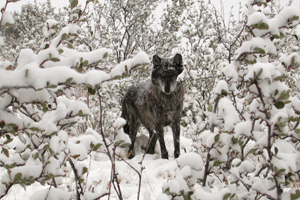
By - Annie White - 2006
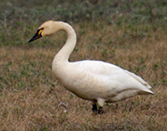 Since the reintroduction of wolves to Yellowstone National Park in 1995, we have
learned much about the effect large carnivores have on an ecosystem.; In the
past it was thought that an ecosystem was built from the bottom up... with plant
life as the basis from which everything grew. Once healthy plants were
established, insects, small rodents, birds, larger herbivores and finally the
top predators fell into a balance with each other. Almost all conservation and
reintroduction efforts were based on this idea. In a damaged area, biologists
would first try to rebuild the plant life before doing anything else. However,
some ecosystems could not be fixed before reintroducing an endangered top-level
animal. In Yellowstone National Park, the US Fish and Wildlife Service was
required by the Endangered Species Act to reintroduce wolves before balancing
the plant base and herbivore populations.
Since the reintroduction of wolves to Yellowstone National Park in 1995, we have
learned much about the effect large carnivores have on an ecosystem.; In the
past it was thought that an ecosystem was built from the bottom up... with plant
life as the basis from which everything grew. Once healthy plants were
established, insects, small rodents, birds, larger herbivores and finally the
top predators fell into a balance with each other. Almost all conservation and
reintroduction efforts were based on this idea. In a damaged area, biologists
would first try to rebuild the plant life before doing anything else. However,
some ecosystems could not be fixed before reintroducing an endangered top-level
animal. In Yellowstone National Park, the US Fish and Wildlife Service was
required by the Endangered Species Act to reintroduce wolves before balancing
the plant base and herbivore populations.
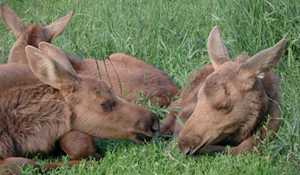 In the years since the wolf reintroduction, Yellowstone has become a premiere scientific laboratory for
wilderness observation and ecosystem recovery. Scientists have come from around
the world to watch the effect wild wolves have on the park. We have discovered
that an ecological effect called the “trophic cascade” has taken over
Yellowstone, with the wolves initiating a more natural ecosystem balance than
has been seen in over 65 years.
In the years since the wolf reintroduction, Yellowstone has become a premiere scientific laboratory for
wilderness observation and ecosystem recovery. Scientists have come from around
the world to watch the effect wild wolves have on the park. We have discovered
that an ecological effect called the “trophic cascade” has taken over
Yellowstone, with the wolves initiating a more natural ecosystem balance than
has been seen in over 65 years.
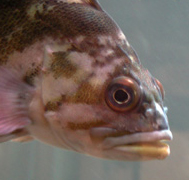 The idea of a “trophic cascade” is relatively basic. The term “trophic” refers to
the different levels of a food chain (with the plants being one trophic level,
insects the next, all of the way up the ladder). However, the “cascade”
forces us to look at the traditional food chain from a different perspective. Picture
a small stream flowing through the woods – then the stream comes to a waterfall,
or cascade. As the stream falls over the edge of the cascade, it hits a rock
and splits, then each of those waterfalls hits another rock and splinters
again. You end up with a single stream at the top scattering out into many
cascades. Now, put the two terms together: trophic cascade. We are learning
that a large carnivore at the top of the food chain is just like the little
stream – it’s effects on the rest of the ecosystem splinter out over all of the
trophic levels. In other words, when wild wolves return to an ecosystem, by
chasing and hunting their prey and competing with other species, they help
restore balance to the ecosystem.
The idea of a “trophic cascade” is relatively basic. The term “trophic” refers to
the different levels of a food chain (with the plants being one trophic level,
insects the next, all of the way up the ladder). However, the “cascade”
forces us to look at the traditional food chain from a different perspective. Picture
a small stream flowing through the woods – then the stream comes to a waterfall,
or cascade. As the stream falls over the edge of the cascade, it hits a rock
and splits, then each of those waterfalls hits another rock and splinters
again. You end up with a single stream at the top scattering out into many
cascades. Now, put the two terms together: trophic cascade. We are learning
that a large carnivore at the top of the food chain is just like the little
stream – it’s effects on the rest of the ecosystem splinter out over all of the
trophic levels. In other words, when wild wolves return to an ecosystem, by
chasing and hunting their prey and competing with other species, they help
restore balance to the ecosystem.
 Since wild wolves have returned to Yellowstone, the elk and deer are stronger, the
aspens and willows are healthier and the grasses taller. For example, when
wolves chase elk during the hunt, the elk are forced to run faster and farther.
As the elk run, their hooves aerate the soil, allowing more grasses to grow.
Since the elk cannot remain stationary for too long, aspens and willows in one
area are not heavily grazed, and therefore can fully recover between
migrations.
Since wild wolves have returned to Yellowstone, the elk and deer are stronger, the
aspens and willows are healthier and the grasses taller. For example, when
wolves chase elk during the hunt, the elk are forced to run faster and farther.
As the elk run, their hooves aerate the soil, allowing more grasses to grow.
Since the elk cannot remain stationary for too long, aspens and willows in one
area are not heavily grazed, and therefore can fully recover between
migrations.
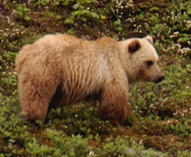 As with the rest of the country, coyote populations were nearly out
of control in Yellowstone before the wolves returned. Now, the coyotes have
been out-competed and essentially reduced by 80 percent in areas occupied by wolves.
The coyotes that do remain are more skittish and wary. With fewer coyotes hunting small
rodents, raptors like the eagle and osprey have more prey and are making a comeback.
The endangered grizzly bears successfully steal wolf kills more often than not, thus
having more food to feed their cubs. In essence, we have learned that
by starting recovery at the top with predators like wolves, the whole system
benefits. A wild wolf population actually makes for a stronger, healthier
and more balanced ecosystem. From plant, to insect, to people... we
all stand to benefit from wolves.
As with the rest of the country, coyote populations were nearly out
of control in Yellowstone before the wolves returned. Now, the coyotes have
been out-competed and essentially reduced by 80 percent in areas occupied by wolves.
The coyotes that do remain are more skittish and wary. With fewer coyotes hunting small
rodents, raptors like the eagle and osprey have more prey and are making a comeback.
The endangered grizzly bears successfully steal wolf kills more often than not, thus
having more food to feed their cubs. In essence, we have learned that
by starting recovery at the top with predators like wolves, the whole system
benefits. A wild wolf population actually makes for a stronger, healthier
and more balanced ecosystem. From plant, to insect, to people... we
all stand to benefit from wolves.
With only 5% of our nation’s wilderness left, people are recognizing the important roles complete ecosystems play in keeping all of us healthy. With new knowledge of the trophic cascade, we can now begin to focus wilderness recovery efforts on a wider variety of ecosystems. Using Yellowstone as an example, we can teach the world about the wolf’s positive and vital role in the wild.
